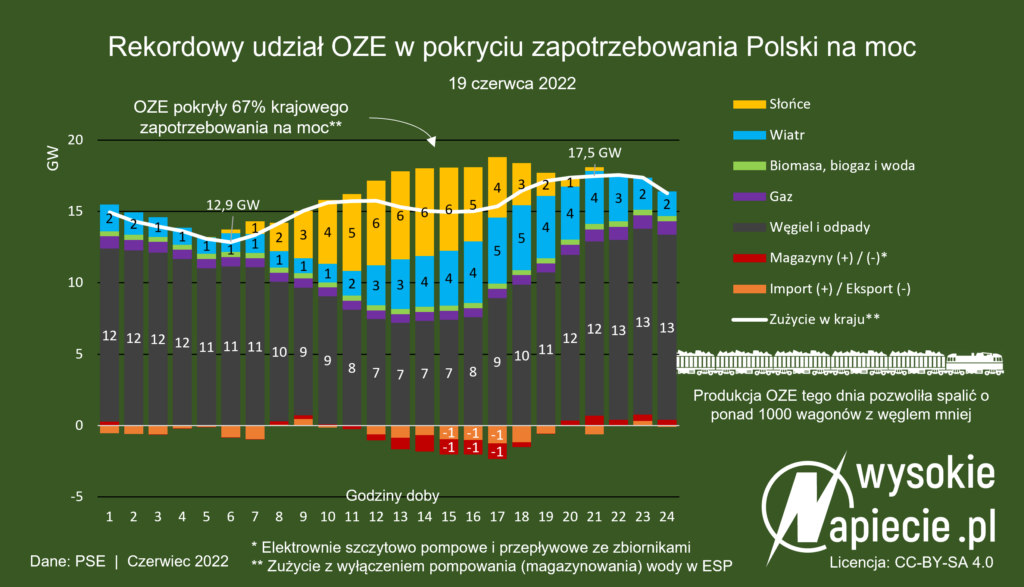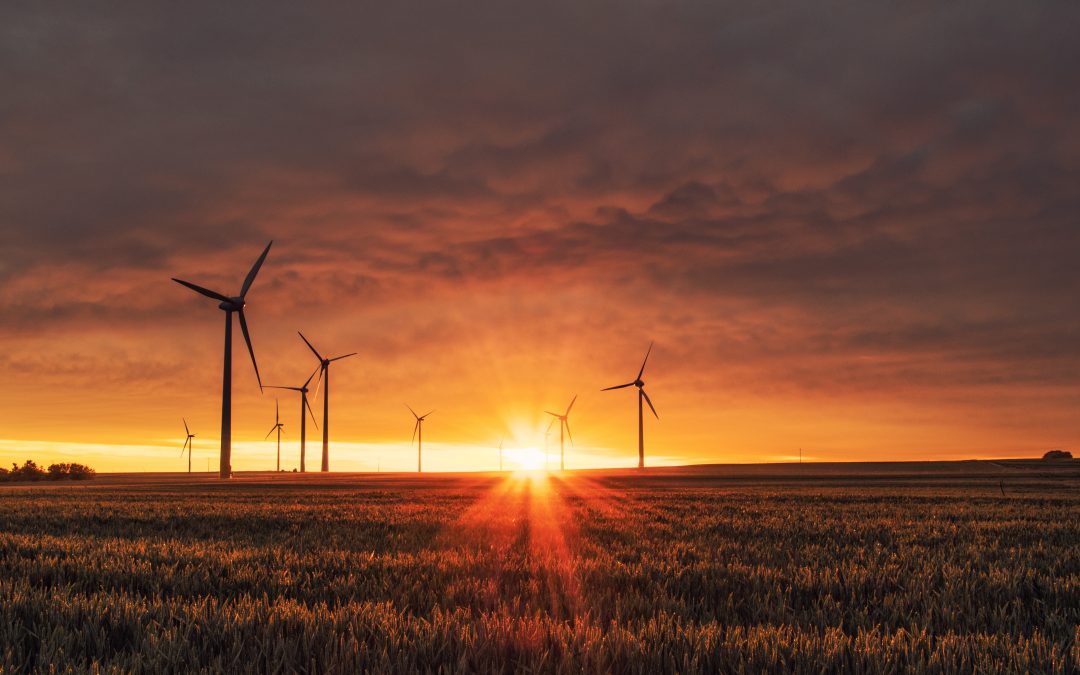Renewable energy sources covered 67% of Poland’s power demand on Sunday afternoon. That was a record share in a country that normally produces the majority of its electricity from coal but has been slowly shifting towards lower-emission sources.
The news comes as coal prices have risen by 300% since last year, stoking fears of a possible energy crisis and pushing the government to last week introduce a guaranteed price of coal for home heating.
On Sunday, however, photovoltaic panels, wind turbines and other renewable sources helped to avoid the burning of 1,000 wagons of coal, reports energy industry news service Wysokie Napiecie.
According to data from Poland’s national grid operator analysed by the website, at 2 p.m and 3 p.m. renewable generation was covering 67% of domestic electricity use after deducting the demand for pumped-storage hydroelectric power plants, which serve as a storage for surplus power
More than 10 GW was provided by renewables at that point, including peak photovoltaic generation of 6.2 GW (out of 10 GW installed capacity) and peak wind generation of 4.6 GW (out of just over 7 GW of installed capacity).
Despite the record share of renewable energy in covering the demand of domestic consumers, the power system worked without disruption.

Due to the high generation of energy from renewable sources, demand for coal-fired power plants during the day fell sufficiently to reduce wholesale electricity prices on the Polish market to €53/MWh, while prices in neighbouring Germany and Lithuania were at €60 and €109/MWh respectively.
As a result, Poland was able to export up to 1.2 GW of net power in the afternoon, and buy cheaper energy from its neighbours in the morning and evening, when prices on the Polish market were higher than theirs, notes Wysokie Napiecie.
Poland, the EU’s most coal-dependent country, saw its proportion of electricity generated from renewables grow from 6.9% in 2010 to 16.9% in 2021, while coal’s share dropped from 86.6% to 70.8% over the same period.
Solar has seen particularly rapid growth in recent years thanks to state subsidies for households that install panels. But new regulations introduced in April make home installations more complex and less financially rewarding, which has significantly reduced demand for new panels.
Meanwhile, while onshore wind capacity grew rapidly until 2015, new regulations introduced the following year made it very difficult to build new turbines. The government and state energy firms are, however, developing plans for the country’s first offshore wind farms on its Baltic coast.
Main photo credit: Karsten Würth / Unsplash

Alicja Ptak is deputy editor-in-chief of Notes from Poland and a multimedia journalist. She has written for Clean Energy Wire and The Times, and she hosts her own podcast, The Warsaw Wire, on Poland’s economy and energy sector. She previously worked for Reuters.




















